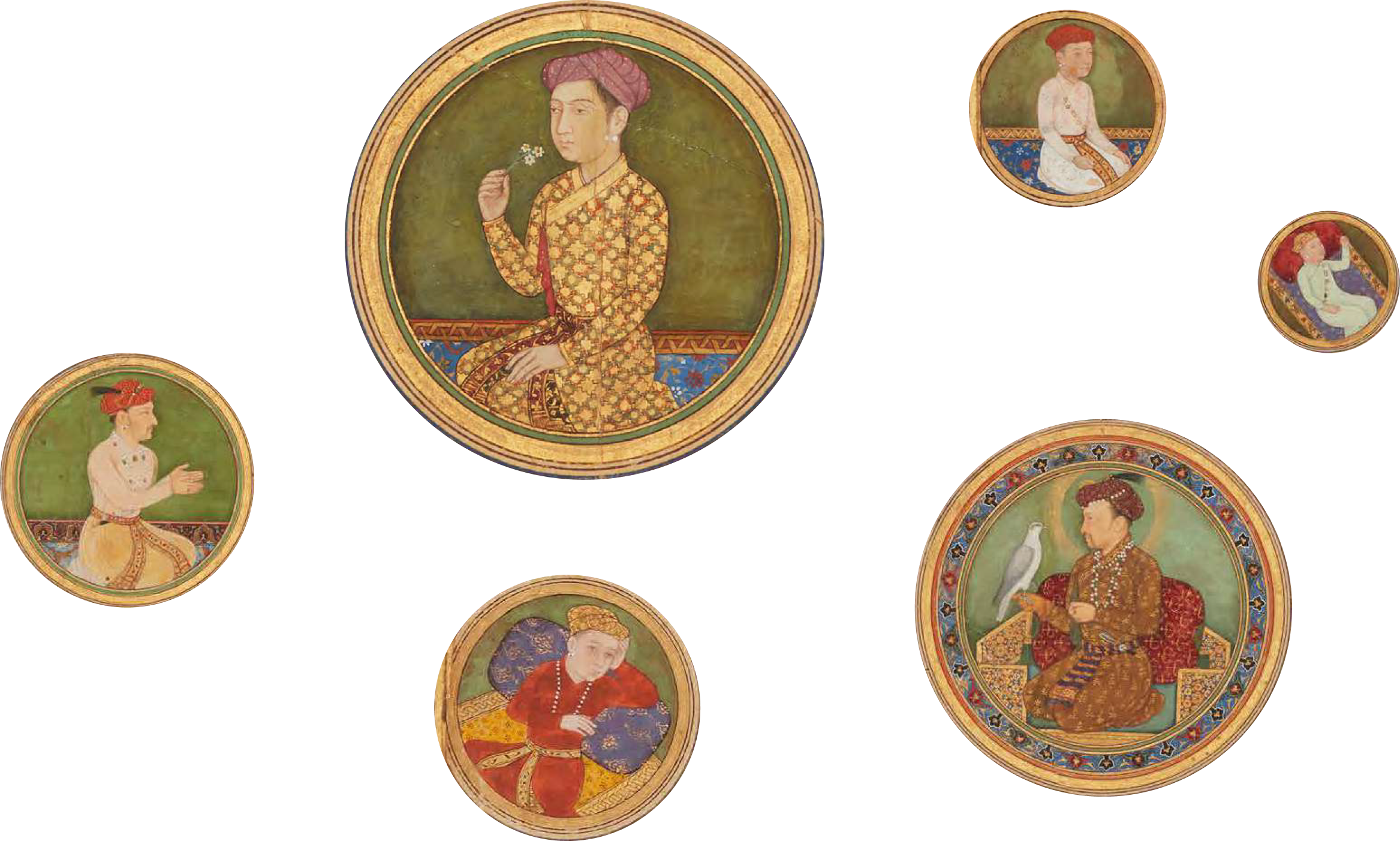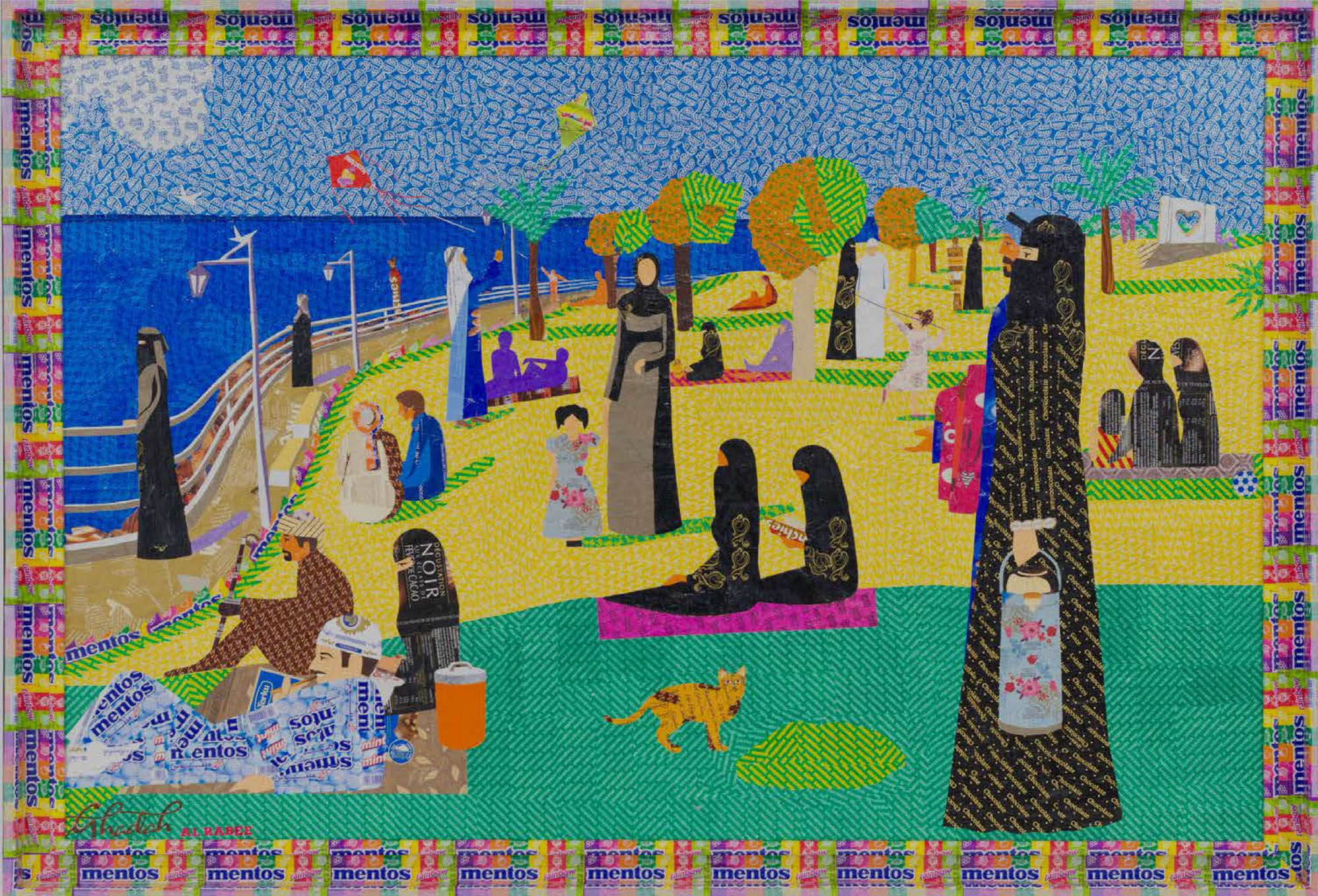A Royal Family Tree: Fathers and Sons
Genealogical Chart of Jahangir India, Agra, 1610-1623. Opaque watercolour, gold and ink on paper. H. 36.2 cm × W. 24.2 cm. AKM 151
All over the world and across the centuries, childhood in a royal family has always been a complex, as well as a pampered affair. This fascinating imperial family tree from 17th-century India tells a host of stories about hierarchies, privileges, pedigree and rivalries relating to the fathers and sons of the Mughal court. Featured here, the emperor Jahangir (reign 1605–1627) is shown surrounded by four of his sons and –in turn– their male offspring, some of them still mere babies. All are depicted with idealized facial features, wearing elegant robes and turbans, adorned with precious jewelry.
But all is not well with this seemingly happy family portrait: Jahangir’s most famous son and eventual successor, Prince Khurram – later known as Shah Jahan– is missing from it. By rights, he and indeed his sons should have appeared right beneath his illustrious father. Instead, this space is occupied by the lineage of the Mughal’s Timurid ancestors. Interestingly, judging by the arrangement of the medallions and marks on the lower half of the paper, it appears that the portraits of Khurram and his sons were in fact removed from the original painting at some stage and replaced by Jahangir’s Timurid forefathers.

Genealogical Chart of Jahangir India, Agra, 1610-1623. Opaque watercolour, gold and ink on paper. H. 36.2 cm × W. 24.2 cm. AKM 151
The reason for this curious omission may have been both political and personal. Prince Khurram had rebelled against his father in 1623, and the theory goes that a disappointed Jahangir arranged for the subsequent erasure of his wayward son and all his offspring from his Mughal family tree. Reflecting on this intricate artwork is a wonderful opportunity to also contemplate our own family trees across the ages, and ponder the many fascinating stories they carry.
Written by Special Guest Contributor Dr. Ulrike Al-Khamis, Director and CEO at Aga Khan Museum. In each issue, we feature a special treasure from the Aga Khan Museum, one that tells a story, captures a moment and inspires conversation.


